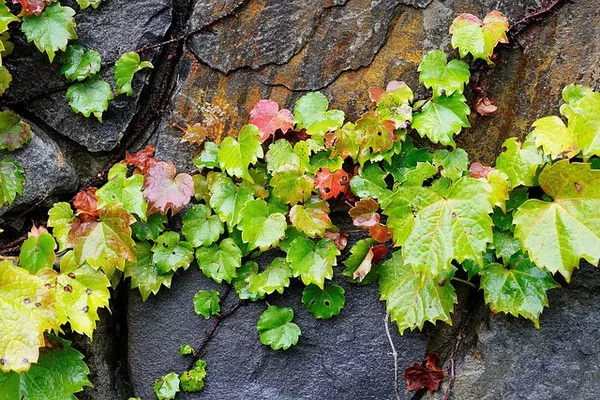In the realm of botanical diversity, non-flowering plants play a vital role despite their lack of showy blooms. While flowering plants, also known as angiosperms, dominate the landscape with their vibrant petals and intricate reproductive structures, non-flowering plants constitute a significant portion of the plant kingdom. These plants, including ferns, mosses, liverworts, and gymnosperms, offer unique ecological contributions and hold valuable scientific and practical significance. In this article, we delve into the world of non-flowering plants, examining their characteristics, roles, and importance in various ecosystems.
Defining Non-Flowering Plants
Non-flowering plants, often referred to as cryptogams, encompass a diverse array of plant species that reproduce without the production of flowers and seeds. Unlike their flowering counterparts, non-flowering plants rely on alternative modes of reproduction, such as spores, to perpetuate their species. This group is further subdivided into mosses, liverworts, ferns, and gymnosperms, each possessing distinct characteristics and life cycles.
Mosses and Liverworts: Ancient Pioneers
Mosses and liverworts, belonging to the bryophyte division, are some of the oldest land plants on Earth. These diminutive plants thrive in moist environments, typically forming lush carpets on forest floors and rocks. Unlike vascular plants, bryophytes lack true roots, stems, and leaves. Instead, they possess rhizoids, which aid in anchoring them to substrates.
Reproduction in mosses and liverworts occurs through spores produced in specialized capsules. These capsules, borne atop slender stalks, release spores into the air, facilitating dispersal to new habitats. The life cycle involves alternation of generations, transitioning between a gametophyte phase (dominant in mosses and liverworts) and a sporophyte phase.
Ferns: Masters of Elegance
Ferns, classified under the vascular plant group Pteridophyta, stand out for their intricate fronds and unique reproductive mechanisms. With true roots, stems, and leaves, ferns have evolved a more complex anatomy compared to bryophytes. Their characteristic fronds unfurl gracefully, exhibiting an array of shapes and sizes.
Ferns reproduce through spores produced in structures called sporangia, typically located on the undersides of fronds. Once the spores are released and dispersed by wind, they germinate into small, heart-shaped gametophytes. These gametophytes produce male and female gametes, facilitating fertilization and the subsequent development of a sporophyte fern.
Gymnosperms: The Naked Seed Bearers
Gymnosperms, including conifers, cycads, ginkgos, and gnetophytes, represent a group of seed-producing non-flowering plants. The name “gymnosperm” translates to “naked seed,” referring to their seeds’ exposure on the surface of specialized structures. These plants have well-developed vascular systems, with true roots, stems, and leaves. Conifers, such as pine trees, are particularly recognizable and dominate many temperate and boreal forests.
Gymnosperms reproduce through the production of seeds contained within cones. Male cones release pollen, which is carried by the wind to female cones for fertilization. Once fertilized, the seeds develop on the scales of the female cones. The life cycle of gymnosperms involves a sporophyte-dominated phase, differing from the bryophyte and fern life cycles.
Ecological Importance of Non-Flowering Plants
Non-flowering plants play crucial ecological roles, despite their subtle appearance. In various ecosystems, they contribute to soil formation, moisture retention, and nutrient cycling. Mosses, for instance, are known to retain moisture in environments like peatlands, preventing soil erosion and providing habitat for other organisms. Ferns also aid in soil stabilization and moisture regulation, especially in forest understories.
Gymnosperms, with their dense foliage and evergreen nature, offer essential shelter and sustenance to wildlife. Coniferous forests provide habitats for numerous species, and their needles create nutrient-rich litter that enriches forest soils. Furthermore, non-flowering plants contribute to carbon sequestration, helping to mitigate climate change by capturing and storing carbon dioxide from the atmosphere.
Scientific and Practical Significance
The study of non-flowering plants holds substantial scientific value. Their unique life cycles and reproductive strategies provide insights into evolutionary processes and ecological adaptations. Additionally, these plants have contributed to human knowledge and practical applications.
Bryophytes, particularly mosses, have served as environmental indicators due to their sensitivity to pollution and habitat degradation. Researchers have employed mosses in biomonitoring studies, assessing air quality and pollution levels in various regions. Ferns, on the other hand, have been utilized in pharmaceutical research, with some species displaying medicinal properties.
Gymnosperms have considerable economic importance, primarily in the timber and paper industries. Coniferous trees are valued for their wood, which is used in construction, furniture, and paper production. Moreover, many gymnosperms, such as pine trees, produce edible seeds that contribute to human diets and provide a source of income for communities.
Conclusion
In the vast tapestry of plant life, non-flowering plants stand as intricate threads, weaving their presence throughout diverse ecosystems. Despite their lack of showy flowers, these plants are essential for ecological balance, scientific exploration, and practical applications. Mosses, liverworts, ferns, and gymnosperms each bring their unique characteristics and contributions to the natural world, highlighting the remarkable diversity of life forms that inhabit our planet. As our understanding deepens, we gain greater appreciation for these non-flowering plants and the invaluable roles they play in sustaining life on Earth.


